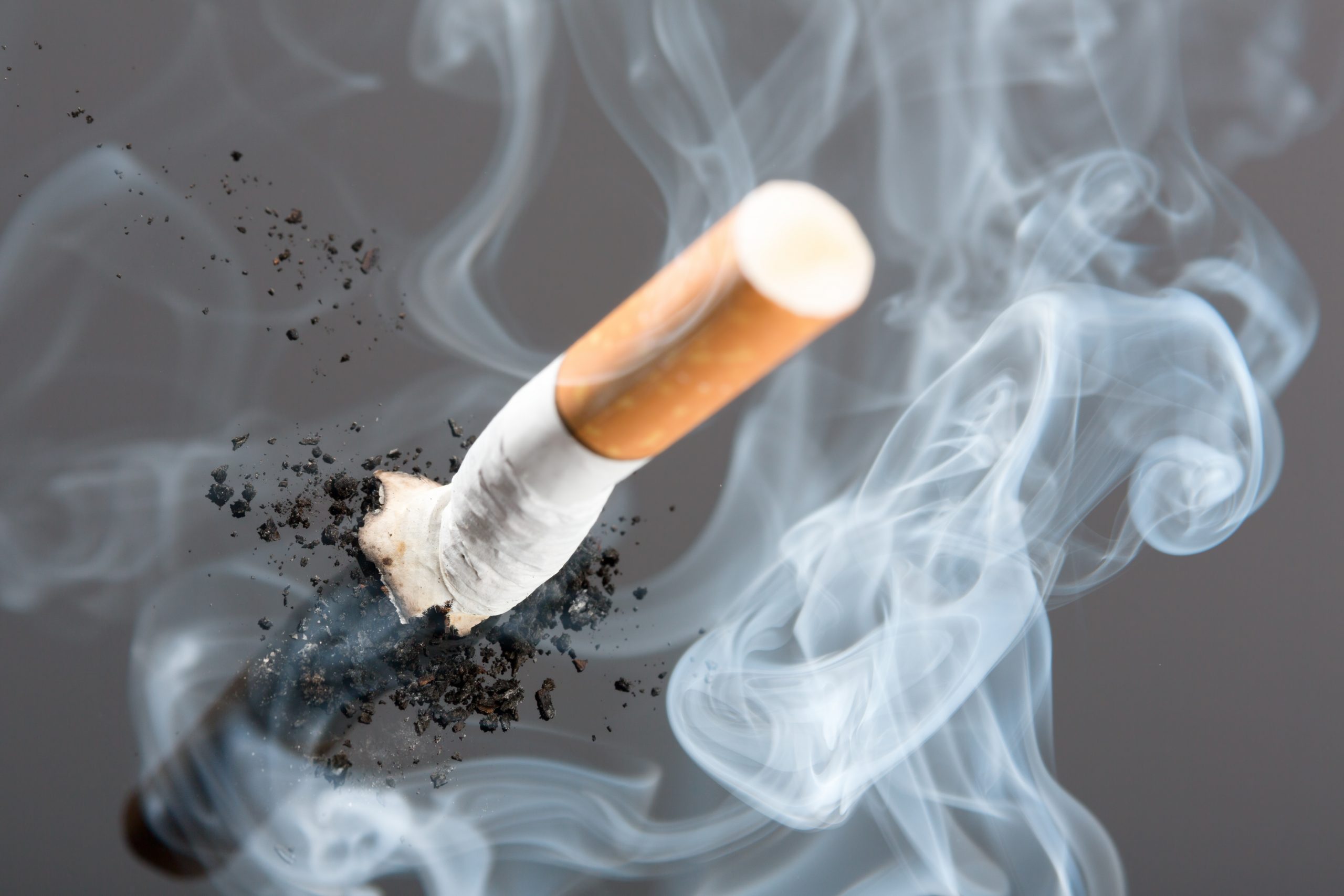Tobacco Smoke Exposure Limits Symdeko Benefit in Pediatric CF Patients
Written by |

Exposure to tobacco smoke limits the medicinal benefit of Symdeko (tezacaftor/ivacaftor combo) in young patients with cystic fibrosis (CF), according to a recent study.
This finding suggests that smoking must be avoided for Symdeko to provide its full benefits. It also suggests that the effects of smoke exposure on next-generation cystic fibrosis transmembrane receptor (CFTR) modulators such as Symdeko should be researched.
The study, “Tobacco smoke exposure limits the therapeutic benefit of tezacaftor/ivacaftor in pediatric patients with cystic fibrosis,” led by a team at the University of Alabama at Birmingham, was published in the Journal of Cystic Fibrosis.
According to the team, an estimated one-third of children and adolescents with CF are exposed to tobacco smoke. Studies in both humans and animals have shown that tobacco smoke limits how well the CFTR protein — the defective protein in CF patients — works, and contributes to its impairment even in people without the progressive lung disease.
The effect that tobacco smoke might have on the action of CFTR modulators, however, has not been studied.
Symdeko, an approved CF therapy marketed by Vertex Pharmaceuticals, is a therapeutic combination of ivacaftor — marketed as Kalydeco as a monotherapy — and tezacaftor.
Tezacaftor is a CFTR corrector, which helps to ensure the CFTR protein folds correctly. Ivacaftor, a CFTR potentiator, which acts by holding open a key gate within the protein, works to stabilize the protein once it reaches the cell surface.
To investigate the impact of tobacco smoke exposure on the therapeutic effects of Symdeko, the researchers analyzed data from the U.S. CF Foundation Patient Registry between 2016 and 2018.
Changes in lung function — measured using the percent predicted forced forced expiratory volume in one second (ppFEV1), a standard diagnostic tool — were assessed among smoked-exposed and non-exposed patients.
In total, records of 6,653 individuals, ages 12-20 (mean age 16.5 years), were analyzed. Of these, 1,251 (18.8%) were prescribed Symdeko.
One-third (33%) of all patients in the study had tobacco smoke exposure, as determined by caregiver self-reports. Among those prescribed Symdeko, approximately 28% reported exposure to tobacco smoke.
The results showed that the Symdeko users exposed to tobacco smoke had a 7.6% lower ppFEV1 than those not exposed, meaning a greater lung function decline. This value increased to an 8.8% difference over the two-year study period.
Symdeko use was found to be associated with an improvement in ppFEV1 values among unexposed CF patients — with rates between 1.2% and 1.7%. In contrast, the medication appeared to provide no benefit among those exposed to tobacco smoke.
This improvement seen in ppFEV1 is smaller than that reported in clinical trials — a roughly 4% improvement in patients with two copies of the F508del mutation, which is the most common mutation to cause CF, and 6.8% in those with only one copy, according to the team.
The investigators attributed this to “real-world” patient populations differing from those in clinical trials and to observing the medication’s effect for a longer period. The therapeutic effect of this kind of therapy “is known to diminish over time as disease continues to progress,” the researchers wrote.
“Our findings serve as a warning sign that smoke exposure has a clinically significant impact on CFTR therapeutics that nullifies marginally effective strategies and likely reduces the benefit of more effective ones, such as the triple-combination therapy,” like Trikafta, the team wrote, basing their findings on the results of the analysis.
Thus, further research is needed on the consequences of tobacco smoke exposure on the clinical benefits of CFTR-directed therapies, they said. The researchers also noted that the effect of smoke on CFTR modulators might impact clinical trials, limiting any potential benefit to smoke-exposed participants.
“This finding demands two actions,” the team concluded, “(1) development and implementation of enhanced smoking cessation strategies for caregivers of smoke-exposed children on CFTR modulators, and (2) determining the effect of smoke exposure in next-generation CFTR modulators.”






